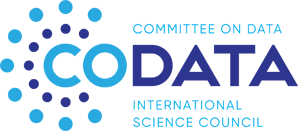Members of the Task Group
- Jeremy Frey, University of Southampton, UK; and IUPAC (Chair)
- Lars Bärring, SMHI, Sweden (Member)
- Stuart Chalk, University of North Florida, USA; and IUPAC (Secretary)
- Steven Emmerson, UCAR, USA (Member)
- Gyorgy Gyomai, OECD (Member)
- Maximilian Gruber, PTB, Germany (Member)
- Pascal Heus, Canada (Member)
- Janet Miles, OIML, France (Member)
- Simon Hodson, CODATA (Member)
- Michael Ward, Elsevier, UK (Member)
- Jan Martin Keil, DLR, Germany (Member)
- Sirko Schindler, DLR, Germany (Member)
Liaisons, CODATA Executive Committee
- Richard Hartshorn, University of Canterbury, NZ; and IUPAC
- Toshihiro Ashino, Toyo University, Japan
Mission and Objectives
The objective of this task group is to work with the International Science Unions to raise awareness of, educate, and enable their communities in the understanding and implementation of digital unit representation. This will be done with reference to each of the three objectives of the CODATA Decadal Programme, namely:
- Enabling Technologies and Good Practice for Data-Intensive Science
- Mobilising Domains and Breaking Down Silos
- Advancing Interoperability Through Cross-Domain Exemplary Case Studies
Each of the above objectives can be addressed by awareness of the different units of measurement representations that are currently available. This, coupled with the movement toward FAIR data, will be used to promote the idea that units of measurement are not second class citizens in science, but rather the most important aspect of what is needed to make data FAIR.
Significance
Every measurement made where a numerical value is generated requires the recording of and association with a unit of measurement. In the current research environment, where the paradigm is shifting to the digital publication of research data in openly accessible formats, researchers annotate a unit of measurement by adding a string of characters to a numeric value in a computer system (database, spreadsheet, text file etc.). While the researcher may well report the unit in a common unit system (e.g. the SI) the guidelines for formatting these strings (e.g., BIPM, ISO, NIST) are often not followed. As a result, there is a significant problem in normalization of units and this is a significant barrier to the interoperability of data.
Impact (Outcomes and Achievements)
- Recommendations for FAIR compliant, machine actionable encoding of units of measurement
in different scenarios (e.g. typesetting, spreadsheet, database, webpage) - Guidelines for the annotation of data with a unit of measurement in digital systems
- Best practices for adopting and implementing the recommended DRUM system
- A Units of Measure Interoperability Service (UMIS) to enable unit web services
Schedule of planned activities and outputs of the Task Group for 2023-2025
- Review DRUM Web pages and update with new members following point 3 below.
- Increase social media activity (e.g. LinkedIn)
- Submit a paper for CODATA Journal from IDW Session March 2024
- Release initial DRUM Services – mid 2024
- Enhance coordination with FAIR & BIPM (via presentations at meetings)
- Expand DRUM membership to be more global and inclusive,
- Announce open call for membership Feb 2024 (see invitation blub below)
- Re-invite the DRUM ambassadors (Jan 2024), arrange a meeting, and look for co-activities.
- Engage metrological services from different countries and publishers)
- Work more closely with the Scientific Unions and encourage publication of recommendations though their channels (e.g. IUPAC Green and Gold Books)
- Attend 2025 SciDataCon/IDW
Invitation to join DRUM
Data cannot be properly understood without units [https://www.nature.com/articles/d41586-022-01233-w]. Data without the correct machine readable units are not FAIR!
This is particularly important now when there are major AI initiatives harvesting data. Without machine-readable interoperability, data cannot be properly compared, and serious errors can result. We are seeking a diverse group of experts to help solve issues of unit representations. If this interests you, please consider joining the CODATA Digital Representation of Units of Measurement Task Group (DRUM TG). The task group is an international body of experts working to build shared solutions for presenting, interpreting and converting units of measurement in unambiguous ways. We need to understand the pain-points of a wide range of disciplines so that we can find truly interdisciplinary approaches.
We welcome and encourage applications from individuals of all backgrounds, races, genders, ethnicities, and career levels, valuing diverse perspectives and inclusive excellence. Modest financial support is available for participation in relevant conferences, workshops, etc.
